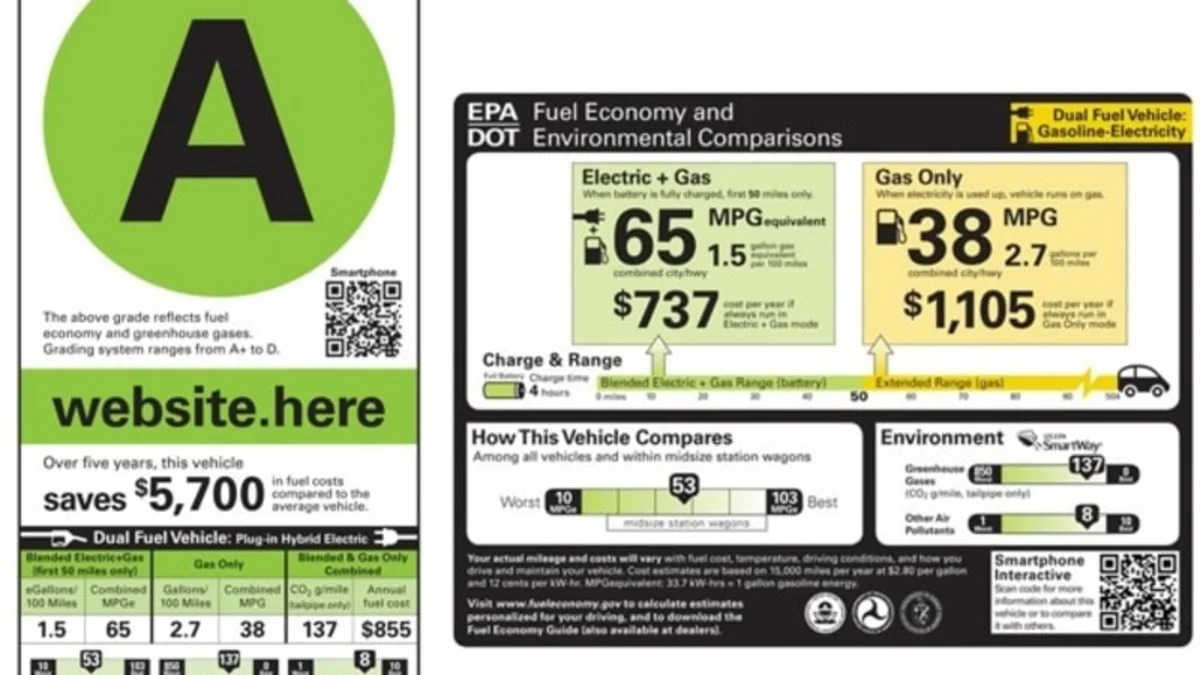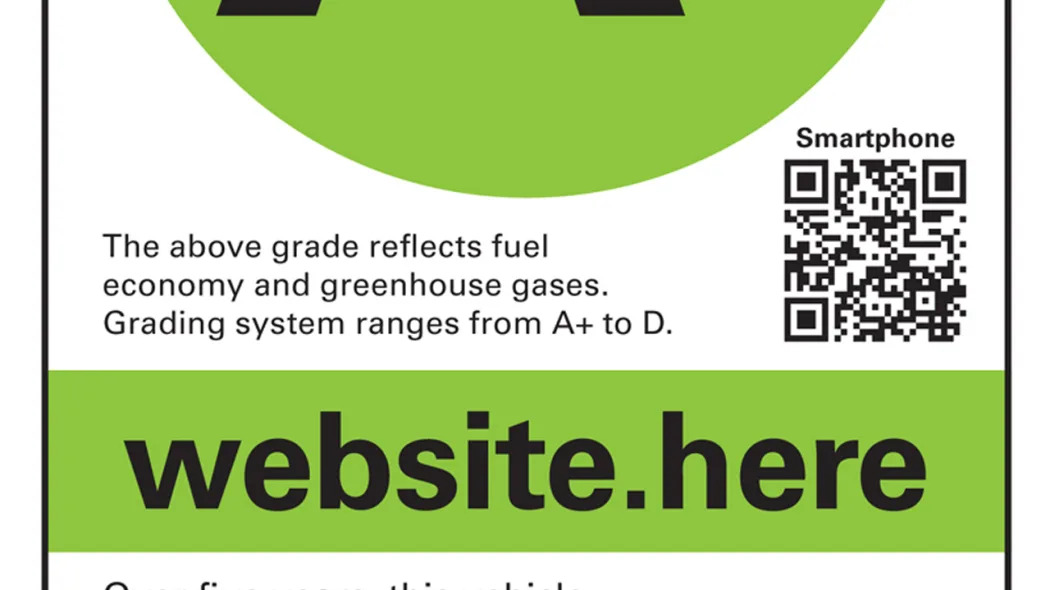Proposed window stickers for plug-in hybrid vehicles – click above for high-res image gallery
With only a few months left before an array of new plug-in vehicles start hitting the market, the Environmental Protection Agency has finally issued proposals for new fuel economy sticker designs. The agency has come up with two basic designs and is now soliciting public comments before issuing a final rule. Both designs feature much of the same content but with different layouts. In each case there is significantly more information than in the past, reflecting the increasing complexity of vehicles. For the first time greenhouse gas emissions will be included, although only tailpipe emissions appear on the label. Because grid emissions could come from anywhere, that will be left up to consumers to determine on their own.
The new designs will also show fuel/energy consumption for the first time in gallons per 100 miles and/or kilowatt-hours per 100 miles. Plug-in vehicles will also feature an mpg equivalent rating that converts electrical energy use to equivalent gasoline use. Plug-in hybrid vehicles will get two sets of mpg numbers, a composite/equivalent value corresponding to energy use when the battery is charged from the grid along with a separate rating for when the battery is depleted. Although it is not shown as a sample, a vehicle like the Chevrolet Volt which operates in electric only and gas only modes could potentially feature those two ratings in place of the gas + electric and gas only shown in the samples. The EPA has not yet replied to our request for a clarification on this question.
Each of the sticker designs also includes an overall combined equivalency rating within the range for comparable vehicles. Despite the fact that MPG is becoming less and less meaningful, the draft rule indicates that it is required by law:
Representing the vehicle's fuel economy performance on the label with an estimate of miles per gallon is a core element of the fuel economy information requirements of EPCA, which specifically states that the label must display "the fuel economy of the automobile" and defines "fuel economy" as "the average number of miles travelled...for each gallon of gasoline.."
The stickers also feature a QR code that can be scanned into a smartphone so that shoppers can save and compare the results.
The main difference between the two designs is that one features a format similar to current stickers while the second design also includes a prominent letter grade from A+ to D that reflects that vehicle's fuel economy and greenhouse gas emissions relative to other vehicles in its class. This letter grade label would de-emphasize the mpg rating in favor of a rating that incorporates overall energy use. The proposals are open for public comment for 60 days before they are finalized and will go into effect for the 2012 model year. That means the 2011 models like the Volt and Leaf are still up in the air.
[Source: Environmental Protection Agency]



Sign in to post
Please sign in to leave a comment.
Continue